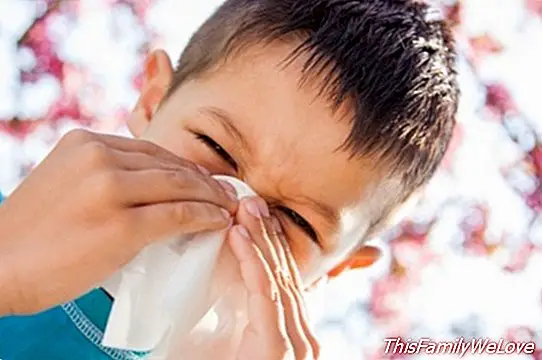Child allergy or catarrh

Sneezing, coughing, nasal itching, tearing and swelling of the eyelids are some of the annoying symptoms of pollen allergy, symptoms that can be confused with a common cold. The fact of not distinguishing between childhood allergies or catarrh causes that part of those affected have not been diagnosed yet.
When we talk about allergy to pollen, the first season of the year that comes to our head is spring. During these months of the year, pollination of plants is greater, especially olive trees and grasses. But during the winter season Pollen also makes its havoc. From the middle-end of January to the end of March, the pollination of cupressaceae, especially arizonic, occurs.
According to experts, the allergy to these types of pollen has increased in recent years, accentuating its effects on those who already had it and new cases appear in adults and children who had never suffered. Thus, the number of winter allergy sufferers has even equaled and even exceeded the number affected by allergy during the spring. Therefore, it is important to go to the specialist, to diagnose if it is a child allergy or catarrh, that is, we are going through a catarrhal process or if we suffer allergy to cupresaceae pollen.
Diesel pollution influences allergy
From the section of Allergology of the University Hospital of Ciudad Real is alerted that while the allergy to arizónicas and cupresáceas affected, a few years ago, only a 5 percent of the population, currently affects between 20 and 40 percent of the population, depending on the locality, reaching this figure at 50 percent in cities such as Barcelona and Madrid, given that pollution, especially diesel, multiply the allergic effects of pollen.
It is very common to find plants of this family in the cities as they are often used in gardening and ornamentation. For example, the common cypress, which we see frequently in walks and avenues, as well as in cemeteries. But it is another type of cypress, apparently, the main responsible for the pollinosis of the Cupresaceae during the winter, it is the cypress of Arizona. In general, the arizona plants are present in many parks, schools, urbanizations, etc. because it is with these plants that the hedges of the gardens that adorn these areas tend to be made.
Natural treatments with sea water
There are natural treatments that help relieve and mitigate some of these symptoms of childhood allergies or colds, such as seawater. Cold-spiked sea water sprays help allergic people keep the nasal mucous membranes in balance and promote nasal cleansing also due to its mucolytic and expectorant effect, they improve mucociliary clearance. The ionomineral richness of seawater provides a repairing action of the mucosa, anti-inflammatory and antiseptic, as well as an activation of local immunity.
Thus, the cold-water microfiltered seawater, both applied as a spray in the nostrils and ingested orally, is an aid in allergic processes because it renews the organic functions, resulting in what experts call the "cellular bloom".




